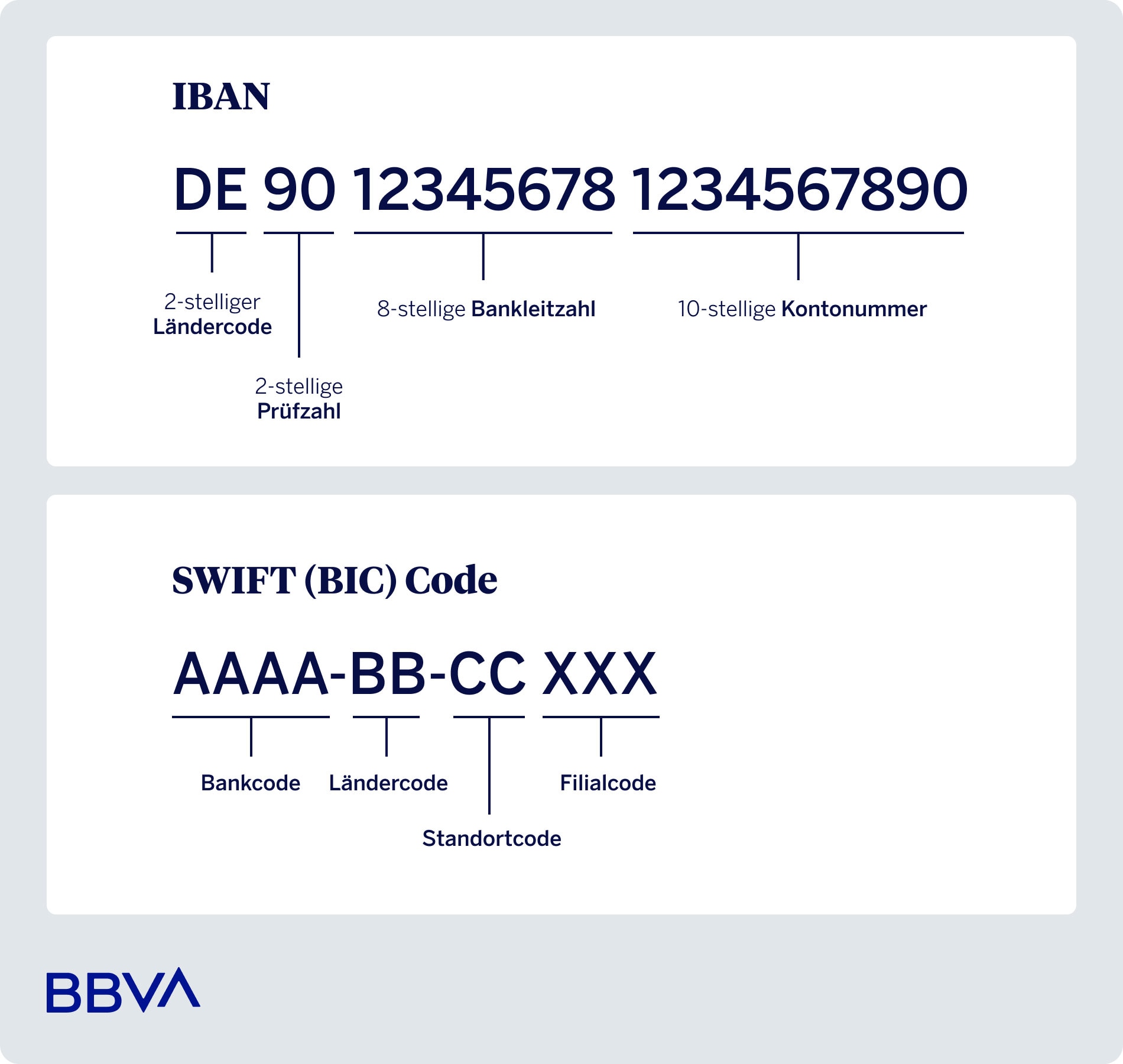What is an IBAN?
The IBAN is an internationally valid numbering system, which uniquely identifies each bank account. Within the SEPA area (Single Euro Payments Area) it is mandatory to have an IBAN, which is strictly standardized. According to the European Economic and Social Committee, the SEPA zone comprises a total of 36 countries, including the 27 EU member states.
That means that, all banks within SEPA countries must use an IBAN for transfers and direct debits. Furthermore, the structure of the IBAN is clearly defined in these countries.
Your free BBVA current account with a German IBAN
How is the IBAN composed?
A German IBAN always has 22 digits and consists of the following elements:
- Country code (two letters)
- Checksum (two digits)
- Bank sort code (8 digits)
- Bank account number (10 digits)
Here is an example: DE (country code) + two-digit checksum + remainder of the account number, which comprises a total of 18 characters:
What are SWIFT and BIC codes?
For international transfers outside the European Union, is it not enough to just use an IBAN. For these, it is important to also specify the BIC code (Bank Identifier Code) for the destination bank in order to make a transfer.
The BIC and the SWIFT code are actually the same thing and are used to uniquely identify banks in international transactions. A BIC code is used within the SWIFT international banking network, which ensures secure, fast money transfers between banks. In practice, the term SWIFT code is often used, while the technical term BIC is mainly found in formal and legal contexts. This code facilitates the secure and encrypted transmission of messages between banks regarding international money transfers.
How is the BIC code composed?
The BIC code (Bank Identifier Code) consists of 8 or 11 characters.
- 8-digit code: It contains information about the bank, the country and the city. Example: AAAA (bank code) BB (country code) CC (city code).
- 11-digit code: In addition to the data mentioned above, the last 3 characters also contain information about the branch. If this information is missing, it is assumed that the branch is the bank's head office. Example: AAAA (bank code) BB (country code) CC (city code) XXX (branch code).
When making an international transfer, the processing bank sends an encrypted message containing all the relevant information about the transfer, including the amount, date, currency, applicable fees, and the banks that are involved. This message confirms that the transfer has been irrevocably executed, providing security and clarity for the recipient.




